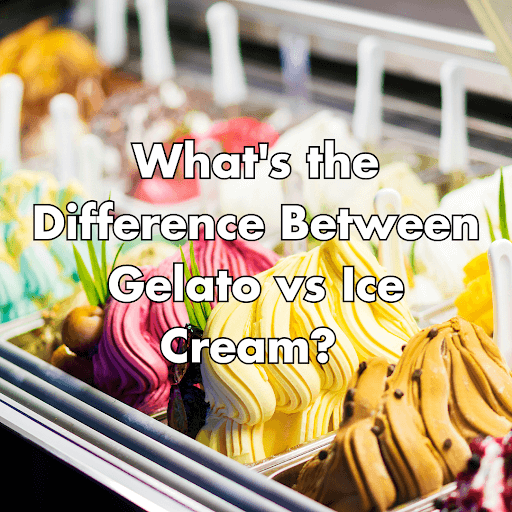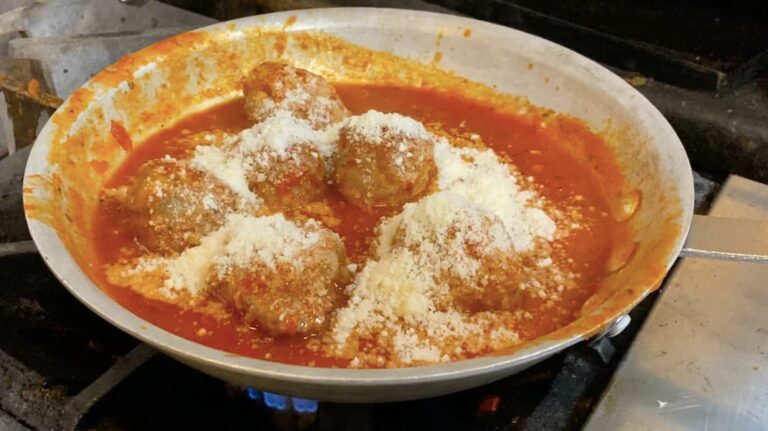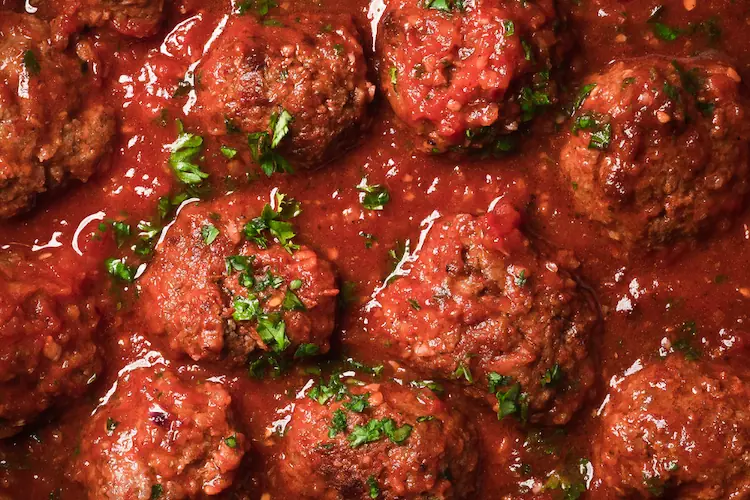I’ve always been obsessed with all types of frozen desserts.
Whether I’m wandering into a gelato shop while traveling or debating over which pint of ice cream to grab at the grocery store, I can never resist a sweet, creamy treat.
But at some point, I realized I wasn’t totally sure what made gelato different from regular ice cream.
Was gelato just a fancy name, or was there more to it?
That curiosity led me down a rabbit hole of research, and now I’m here to share everything I’ve learned about the key differences between gelato and ice cream.
What’s the Difference Between Gelato vs Ice Cream?
At first glance, these frozen treats seem similar, but the key differences lie in their ingredients, production process, texture, and temperature.
Today, I’ll break it all down so you’ll know exactly what to pick next time you’re craving something cold and sweet.

The Main Difference: Ingredients & Fat Content
One of the most significant differences between gelato and ice cream is the proportions of ingredients, specifically the milk fat content.
- Gelato: Contains less cream and less butterfat, usually between 4-9% milk fat, making it a denser texture with a smoother texture. Traditional Italian gelato is made with fresh milk, fewer egg yolks, and natural flavors, often incorporating fruit puree or fresh fruit.
- Ice Cream: American-style ice cream contains a higher proportion of cream, typically ranging between 14-25% fat content, making it creamier and richer in texture. The heavy cream contributes to the higher fat content, which coats the taste buds for a more indulgent experience.
Churning Process & Air Content: Why It Matters
The production process is another crucial distinction between these two frozen desserts. The way they are churned impacts the amount of air incorporated into the finished product.
- Gelato: Made using a much slower speed, incorporating less air (also called lower overrun), resulting in a dense texture and silky texture.
- Ice Cream: Churned at a much faster rate, whipping in plenty of air, which creates a fluffier, softer, and lighter texture.
Commercial ice cream manufacturers often add guar gum and natural stabilizers to improve consistency and shelf life. Meanwhile, authentic Italian gelato follows a traditional way of making frozen treats, prioritizing natural ingredients and fresh flavors.

Temperature: Colder vs. Warmer
Another big difference is the serving temperature.
- Gelato: Served at a slightly warmer temperature than ice cream, which makes it softer and more scoopable.
- Ice Cream: Stored and served at a colder temperature, which helps maintain its creamier texture for longer but makes it harder when frozen.
This temperature difference means that when you take a bite of gelato, your taste buds immediately detect the flavors, whereas ice cream, due to its colder temperature, takes a few extra seconds to melt in your mouth.
Texture: Silky vs. Creamy
- Gelato: Due to its lower fat content and slower churning process, gelato has a smooth texture and silky texture that makes it feel more luxurious.
- Ice Cream: The high speed churning and higher fat content give ice cream a creamier texture, with lots of cream creating an indulgent mouthfeel.
Production Process: Traditional vs. Commercial
- Gelato: Often made in small batches using gelato machines at gelato places, giving it an artisanal touch. The production site follows the traditional way of making frozen desserts with natural flavors and fresh ingredients.
- Ice Cream: Usually mass-produced in ice cream manufacturers’ administrative offices, where stabilizers like guar gum and sugar syrup are added to maintain consistency.

Quick Facts to Remember
- American ice cream = lots of air, higher fat, colder temperature.
- Italian gelato = less air, lower fat, slightly warmer temperature.
Common Misconceptions
Many people assume that the only difference between gelato and ice cream is how they’re served, but in reality, the proportions of ingredients, fat molecules, and production process all play a role in their unique characteristics.
- Gelato has less sugar, making it a lighter alternative.
- Regular ice cream is often more processed, while gelato is made using fresh ingredients.
- High-quality, premium ice cream brands often mimic authentic Italian gelato by reducing air content.

Frequently Asked Questions (FAQs)
What makes gelato different from regular ice cream?
Gelato has less cream, less air, and a lower fat content, making it denser, silkier, and more flavorful compared to traditional ice cream.
Why does gelato have a smoother texture than ice cream?
Gelato is churned at a slower rate, incorporating less air, which results in a denser, creamier texture compared to ice cream. Ice cream, on the other hand, has a higher overrun (more air), making it fluffier.
Can gelato be made dairy-free?
Yes! Some dairy-free gelato is made with coconut milk or almond milk, giving those with lactose intolerance a way to enjoy this exquisite dessert.
Does gelato have a higher or lower fat content than ice cream?
Gelato contains a lower percent fat because it has little cream and more milk, whereas ice cream has a high proportion of cream, giving it a richer texture.
What makes authentic gelato different from commercial ice cream?
Authentic gelato is often made in small batches at a gelato place, using natural ingredients without artificial stabilizers. Many ice cream manufacturers use emulsifiers like guar gum to achieve a consistent texture in mass production.
Why does ice cream sometimes feel icy while gelato stays creamy?
Ice cream contains large ice crystals due to its higher water content and storage at colder temperatures. Gelato’s lower temperature and slower churning prevent large ice crystals from forming, giving it a silkier consistency.

Tips & Tricks for Choosing the Right Frozen Dessert
- If you love creaminess, go for premium ice cream.
- If you want something denser with intense flavors, opt for authentic Italian gelato.
- If you’re looking for a refreshing, lower-fat option, try scoops of gelato instead of traditional ice cream.
- Next time you host a dinner party, serve gelato instead of ice cream to wow your guests!
The Final Scoop
At the end of the day, whether you pick a cup of gelato or a scoop of ice cream, you’re in for a treat. They may have different names and different textures, but both offer delightful experiences.
If you prefer dense, silky, and naturally flavored frozen treats, go for gelato. If you love airy, creamy, and rich ice cream, then classic American-style ice cream is your best bet.
What’s your favorite—gelato or ice cream? Let me know in the comments!










